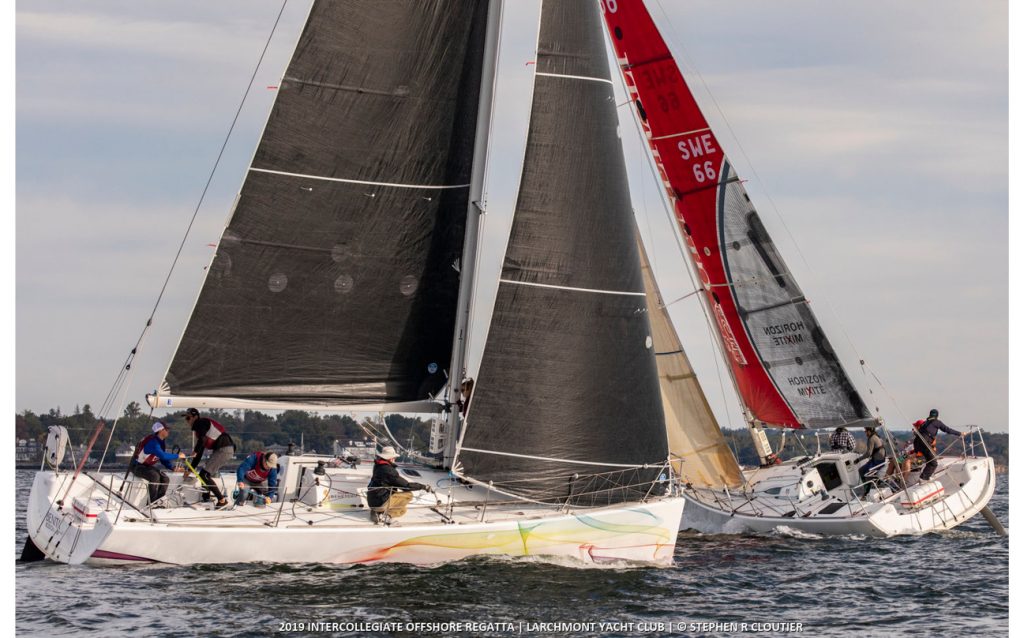One of the most important parts of tactical planning is avoiding the bad air of other boats. The effects of sailing in wind shadows, even for short periods of time, can be devastating. This is especially true on the first beat, where everyone starts out so close together and losing even one boatlength can put you back in the pack.
Here’s another way to think of it: Many sailors work very hard on boatspeed (and that’s a good thing). But even if you are the fastest boat in your fleet, you may be only 5% faster than the slowest boat. Compare this with the potential losses due to sailing in bad air. That could make you 10% or even 20% slower than a boat with clear air!
Obviously, your goal should be to avoid bad air as much as possible. In order to do this, you must know where wind shadows are. One key is realizing that a boat’s dirty air extends to leeward and aft in the direction opposite its apparent wind (not the true wind). This is why, when you are covering another boat, you must usually be farther forward than you think to get them in your bad air. The exact size and shape of a boat’s wind shadow depends on a number of factors that include the following:
• The height and width of its sailplan – A taller rig with lower-aspect-ratio sails will produce a larger wind shadow.
• The boat’s sailing characteristics – A fast, close-winded boat will produce a different shadow than a slower, lower-pointing boat.
• The wind velocity – A boat’s wind shadow extends much farther to leeward in light air because when the wind flow is interrupted it takes much longer to come back together.

During the first beat, good boat-on-boat tactics are very important because the fleet is usually so close together. To follow your strategic plan and fight your way out of the pack, you must put yourself in good positions relative to your competition. Often, gaining just a few feet here or there will enable you to cross one or more starboard tackers near the windward mark. And that could be the difference between rounding the mark
The effect of sailing in someone’s wind shadow also depends on many factors including these:
• Where you are in the shadow – Obviously, the closer you are to the windward boat the more you will be slowed.
• The wind velocity – In light air, wind shadows are not only bigger but they hurt you more. That’s because in 7 knots of wind you may see only 5 knots in the wind shadow. This large relative decrease will have a huge negative impact on speed and pointing.
• Waves – When you are sailing in chop, it’s already hard to make your boat go fast, and this problem is compounded if you are sailing in bad air.
• The presence of more than one boat – It’s bad enough when you are in the wind shadow of one other boat, but when you are experiencing the effects of two or more boats you could really be going slow.
The key to going fast in wind shadows is to know where they are and avoid them in the first place, especially in the conditions listed above. ■
This article originally appeared in David Dellenbaugh’s Speed & Smarts, The newsletter of how-to tips for racing sailors. If you want to sail faster and smarter, log onto SpeedandSmarts.com.
A resident of Easton, CT, Dellenbaugh was tactician and starting helmsman for America3’s successful defense of the America’s Cup in 1992. He’s a Lightning World Champion, two-time Congressional Cup winner, seven-time Thistle National Champion, two-time winner of the Canada’s Cup, three-time Prince of Wales U.S. Match Racing Champion, and a winner of the U.S. Team Racing Championships for the Hinman Trophy.




